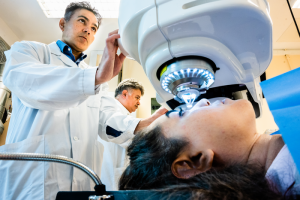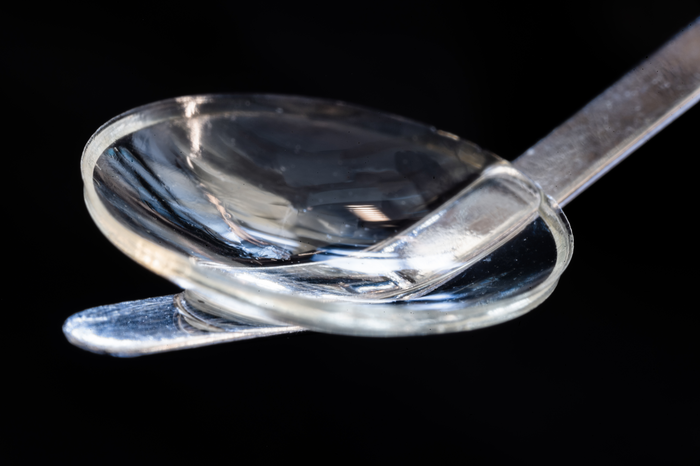For the estimated 12.7 million people around the world who are blind due to corneal stromal disease, a transplanted cornea from a human donor is the only way of regaining vision. But just one in 70 patients receives a cornea transplant. Now, researchers describe a cell-free engineered corneal tissue implant—made of collagen protein from pig’s skin—and a minimally invasive surgical method for its implantation. In a pilot study, performed in India and Iran (clinicaltrials.gov no. NCT04653922), all 20 patients who received the implants had vision restored.
The study is published in Nature Biotechnology, in the article, “Bioengineered corneal tissue for minimally invasive vision restoration in advanced keratoconus in two clinical cohorts.”
“The results show that it is possible to develop a biomaterial that meets all the criteria for being used as human implants, which can be mass-produced and stored up to two years and thereby reach even more people with vision problems,” said Neil Lagali, PhD, professor at the department of biomedical and clinical sciences at Linköping University (LiU) in Sweden. “This gets us around the problem of shortage of donated corneal tissue and access to other treatments for eye diseases.”

Twenty people who were either blind, or on the verge of losing sight (due to advanced keratoconus), participated in the pilot clinical study and received the biomaterial implant. The operations were free from complications; the tissue healed fast; and an eight-week treatment with immunosuppressive eye drops was enough to prevent rejection of the implant. (With conventional cornea transplants, medicine must be taken for several years.) No complications were noted for the two years that the patients were followed.
The patients’ experienced improvements in the cornea’s thickness. In addition, the curvature were restored to normal. The participants’ sight improved as much as it would have after a cornea transplant with donated tissue. Before the operation, 14 of the 20 participants were blind. After two years, vision had been restored to all 20. Three of the Indian participants who had been blind prior to the study had perfect (20/20) vision after the operation.
The cornea consists mainly of collagen molecules derived from pig skin that is a byproduct of the food industry—making it easy to access and economically advantageous. In the process of constructing the implant, the researchers stabilized the loose collagen molecules forming a robust and transparent material that could withstand handling and implantation in the eye. While donated corneas must be used within two weeks, the bioengineered corneas can be stored for up to two years before use.
The researchers have also developed a new, minimally invasive method for treating the disease keratoconus, in which the cornea becomes so thin that it can lead to blindness. Today, a keratoconus patient’s cornea at advanced stage is surgically removed and replaced by a donated cornea, which is sewn into place using surgical sutures. This kind of surgery is invasive and only done at larger university hospitals.
“A less invasive method could be used in more hospitals, thereby helping more people. With our method, the surgeon doesn’t need to remove the patient’s own tissue. Instead, a small incision is made, through which the implant is inserted into the existing cornea,” said Lagali.
No stitches are needed with this new surgical method. The incision in the cornea can be made with high precision thanks to an advanced laser, but also, when needed, by hand with simple surgical instruments. The method was first tested on pigs and turned out to be simpler and potentially safer than a conventional cornea transplant.
A larger clinical study followed by market approval by regulatory authorities is needed before the implant can be used in healthcare. The researchers also want to study whether the technology can be used to treat more eye diseases, and whether the implant can be adapted to the individual for even greater efficacy.
“Safety and effectiveness of the bioengineered implants have been the core of our work,” said Mehrdad Rafat, PhD, adjunct associate professor at LiU’s department of biomedical engineering and founder and CEO of LinkoCare Life Sciences, which manufactures the bioengineered corneas used in the study. “We’ve made significant efforts to ensure that our invention will be widely available and affordable by all and not just by the wealthy. That’s why this technology can be used in all parts of the world.”







